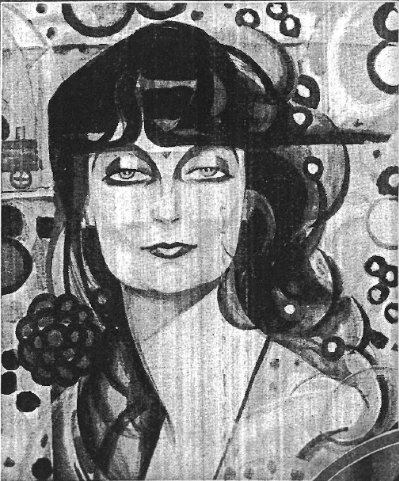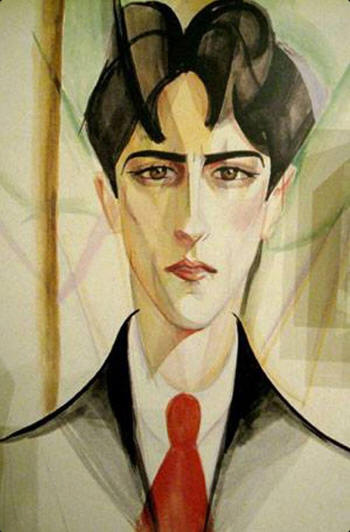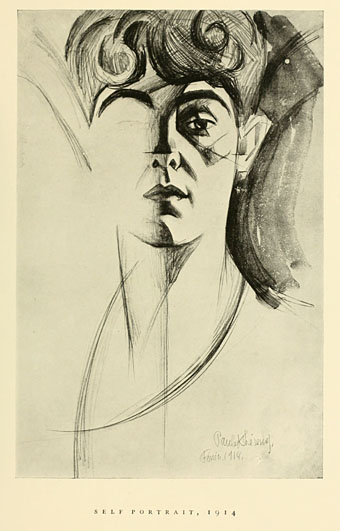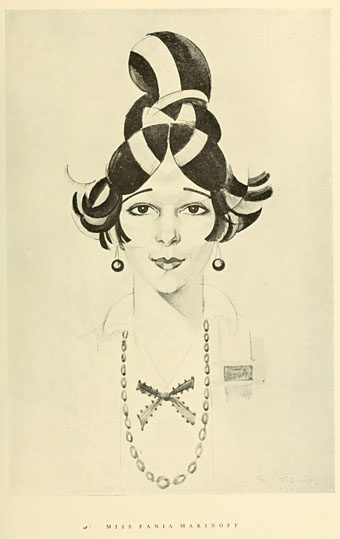

Partner Jean Cocteau, Witter Bynner
Queer Places:
École de Rythmique, 52 Rue de Vaugirard, 75006 Paris, France
Grand Hotel, now Leysin American Schools SA, Chem. de la Source 3, 1854 Leysin, Svizzera
Villa Vizcaya, 3251 S Miami Ave, Miami, FL 33129
Arts Club of Chicago, 610 S Michigan Ave, Chicago, IL 60605
Kensico Cemetery, 273 Lakeview Ave, Valhalla, NY 10595
 Paul
or Paulet Thévenaz (February 22, 1891, Geneva (Switzerland) - July 6, 1921,
New York (N.Y.)) was a Swiss painter who was
featured in a Vanity Fair Magazine, 1916, about his thoughts on the
relationship between dance and modern painting. The article was accompanied by
four of his portraits; the sitters were Jean Cocteau, Igor Stravinsky, the
Comtesse E. De Beaumont and Comtesse Mathieu De Noailles. The profile was
written by the novelist Marie Louise Van Saanen.
Paul
or Paulet Thévenaz (February 22, 1891, Geneva (Switzerland) - July 6, 1921,
New York (N.Y.)) was a Swiss painter who was
featured in a Vanity Fair Magazine, 1916, about his thoughts on the
relationship between dance and modern painting. The article was accompanied by
four of his portraits; the sitters were Jean Cocteau, Igor Stravinsky, the
Comtesse E. De Beaumont and Comtesse Mathieu De Noailles. The profile was
written by the novelist Marie Louise Van Saanen.
He studied in Paris before World War I. During this time he illustrated Gymnastique rythmique (1912) and Les musiques de la guerre (1915). While studying in Paris, Thévanaz came under the influence of Igor Stravinsky and Jean Cocteau, and his paintings and murals reflect a fluidity of line and delight in color which leap out even from faded reproductions. In March 1914, Cocteau joined Stravinsky at the Grand Hotel in Leysin, accompanied by his then lover, Thévenaz, whom Cocteau introduced as an "unpolished, simple, fresh intelligence." Cocteau and Thévenaz had met at the School for Eurhythmy (École de Rythmique) on the Rue de Vaugirard, Paris, which taught the Dalcroze method, a discipline for "Norwegian artists" that joined athletics, vegeterianism, and dance. Paulet Thévanaz was the most talented student at the school; he had followed the teaching of Dalcroze, in Hellerau, near Dresden, as Nijinsky had done in 1912, and believed in the body as an instrument in itself, the equal of the violin or the piano, but one that had to be "played" independently of any music. Dazzled by the rhythmic movements that Thévenaz executed in the garden of Count Etienne de Beaumont's mansion on rue Duroc (Thévenaz gave the count, a ballet lover, gymnastic lessons in a black leotard), and charmed by his chamois-like suppleness, Cocteau decided to give him the role in David, which he already knew Nijinsky couldn't take.


Paul Thevenaz. Photo by Marcia Stein

Paul at play. Photo by: Alice Boughton

Paul Thévenaz at work creating the Renaissance mural for the ceiling of the loggia of the Casino Vizcaya in Maimi, Florida for industrialist James Deering

Anna, Comtesse Mathieu de Noailles, by Paul Thévenaz

Igor Strawinsky, by Paul Thévenaz

Comtesse E De. Beaumont, by Paul Thévenaz

Portrait de la Princesse Soutzo épouse de Paul Morand , 1916, by Paul
Thévenaz

Jean Cocteau, by Paul Thévenaz

Jean Cocteau, 1917, by Paul Thévenaz

Self-Portrait, 1914

Fania Marinoff, by Paul Thévenaz

Sketch of Robert Handley by Paul Thevenaz 1919

Sketch for Blumenthal Pool by Paul Thevenaz

Thévenaz trained with the American Army during the First World War and moved to the United States after the War in 1917 with Jacques Copeau's dance group, receiving numerous mural commissions for estates on Long Island and Manhattan town houses. He was also part of the New York School of Dalcroze Eurhythmy. He had also become well known in France as a painter of portraits, and a leader in a school of younger cubists. The success of his interior decorations for wealthy individuals propelled him to Miami, Florida, early in 1921, where the agricultural machinery magnate James Deering was building his Vizcaya Palace. Thévenaz painted the ceiling of the loggia of the Casino Vizcaya in the Italian Renaissance style. It took six months to complete. The estate was built between 1914 and 1922 as the winter residence for Deering.
It was the
Thévenaz’s irrepressible vitality
which first attracted Witter Bynner
Bynner was devastated when Thévanaz suddenly died in New York of a ruptured appendix in 1921. He helped compile and edit a memorial volume of the artist’s work, Paul Thévenaz, A Record of His Life and Art, which was privately printed the following year in 1000 copies. It was funded by Long Island heiress Alice Delamar.
His work solidly reflects the spirit of Art Deco some years in advance of the Paris International Exposition of 1925 and represents one of the earliest manifestations of the movement in the United States.
Probably the same as "Paulet Thevenas" mentioned in Mural Painters in America (1949).
My published books: